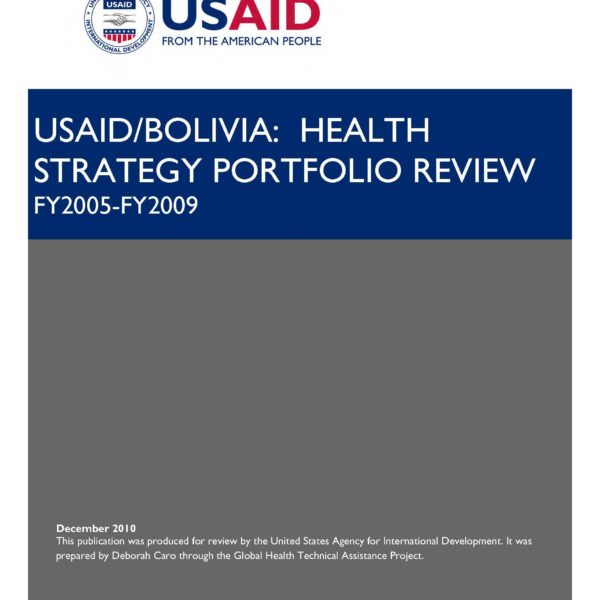In preparation for the design of a new strategy, a five person team undertook a portfolio review of USAID/Bolivia‘s health Program. A portfolio review was more appropriate assessment than a final evaluation as midstream changes to the FY2005-FY2009 strategy in 2007 made it unrealistic to measure impacts of interventions implemented for barely two years.
The period covered by the strategy reviewed in this report was a time of considerable change in Bolivia which caused a great deal of instability in programs funded by USAID. The health portfolio, consequently, went through a number of changes in organization and geographical location. At the same time there were a number of changes in leadership in both the USAID Health Office and in the Ministry of Health, as well as in some of the partner organizations. All of this contributed to making it quite difficult to review the portfolio without providing a great deal of detail on the context in which the USAID Health Strategy was implemented. This makes for a very detailed and dense rendering of what happened, when, and how. The report is structured to capture all this detail but to also allow readers to skip to the information of most interest. The first part of the report provides background on the objectives of the portfolio review and on the Bolivian health context. The second section focuses on a description of the 2005-2009 health strategy. The third section of the report is a description of the activities and implementing partners framed first in a historical account of implementation of the Rural Health portion of the strategy, and secondly in an explanation of how other activities and implementing organization contributed to the three intermediate results. The fourth section presents the strengths and weaknesses of the major activities implemented under the strategy. The fifth section examines the overall performance at the SO level. The final section provides key lessons and recommendations for the design of the 2011-2015 strategy.

